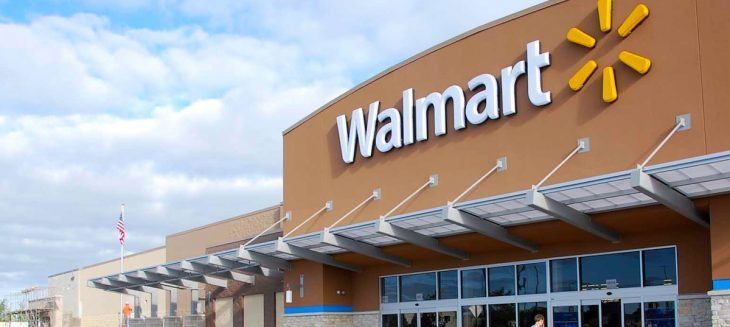Weak economy, strong dollar to pressure Wal-Mart sales, opinions mixed on impact of SNAP cuts
by April 12, 2016 9:12 am 289 views

A Walmart U.S. already struggling to boost revenue, margins and same-store sales has the added challenge of doing all that and more amid weak U.S. GDP growth and cuts to the federal food stamp program.
The U.S. economy produced an anemic growth rate of just 0.1% in the first quarter of this year thanks primarily to a weak energy sector, lack of equipment purchases and sluggish exports stymied by a strong U.S. dollar. This is not good news for Wal-Mart Stores, the nation’s largest mass retailer who already reported the first annual revenue decline in more than 45 years and curbed its expectations to flat growth for much of this year.
Eugenio Aleman, senior economist for Wells Fargo Bank, says a stronger labor market will push personal consumption growth rates to 2.7% for the rest of the year. That said, year-over-year comparison sales for Walmart U.S. are expected to be tough as the recent cuts in Supplemental Nutritional Assistance Program (SNAP, the food stamp program) were rolled out in 22 states, including Arkansas.
While it’s too early to know what the impact will be for Walmart, the nation’s largest grocer, Craig Johnson, president of Customer Growth Partners, expects the SNAP cuts will ding Walmart’s U.S. same-store sales growth between 0.4% and 0.6% in the next few quarters. He said this fractional percentage drop is not insignificant and the impact for a grocery retailer the size of Walmart is worth watching given the 1.4% decline in fiscal year revenue Walmart reported in February.
Walmart’s recent 10K filing with the U.S. Securities and Exchange Commission indicates that last year’s revenue dip reversed what had been at least a 45-year upward trend. The retailer also has lowered its sales forecast for this year, noting that without the recent store closings and a stronger U.S. dollar it would have been able to achieve the previously forecast 3% to 4% annual revenue growth as it predicted.
The recent pullback in the SNAP will impact between 500,000 and 1 million low-income consumers which must now be employed, training for a job or volunteering as the government looks to trim entitlement payments extended during the Great Recession. The waivers that had been used by a number of states in recent years have been pulled and the three-month trial period that began in January has also expired so the full impact of the SNAP cuts will likely be felt in the next two quarters. The Center on Budget and Policy Priorities estimates the loss of this food assistance, which averages approximately $150 to $170 per person per month for this group, will cause hardship among many.
Aleman said consumers have been the driving force of the U.S. economy for 7 years and he expects that to continue although spending was tepid in the first quarter at just 1.9% annualized, which he says will improve to 2.7% in 2016.
“This is good news of course propelled by a stronger labor market,” Aleman said. “We are starting to see a little more participation in the labor force, which is positive because that means folks who had given up a job search are now looking for work as prospects are better.”
The job requirement for SNAP recipients could be part of the reason the labor force number grew in the past two months, he added.
Not everyone agrees the SNAP cuts will be a material impact to the retail giant. Dan Burrows, financial contributor to InvestorPlace, said Walmart has bigger concerns than the loss of SNAP revenue. He said stagnant wage growth, a rising dollar and relentless competition from Amazon, Aldi, Target and Dollar Stores are the real worries. However, and at least in the first quarter of this year, he said Wall Street is happy with how Walmart is tackling these challenges.
“Sure, it’s expensive to raise wages, expand e-commerce and close underperforming stores, but investors seem to have embraced these strategic moves as investments in the future,” Burrows said. “None of these moves come without risks, but based on the performance of Walmart stock this year you could say that they’re already priced in.”
Shares of Wal-Mart (NYSE: WMT) have risen in value roughly 10% through the first three months of 2016, a welcome move after the stock lost nearly 30% of its value throughout 2015. Shares closed Monday at $67.40, down 66 cents. The 52 week range for the stock is $80.98 and $56.30. The S&P 500 has been flat most of this year, against double digit gains by Walmart.
“Now Wall Street appears to be more confident in Walmart and its turnaround story, so sentiment has changed. This is evident in Walmart’s trailing price-to-earnings multiple which hit a low of 12 at the end of 2015 and is now trading at nearly 15 times forward earnings,” Burrows said. “Walmart might have 99 problems, but SNAP ain’t one.”
He said anything that dents Walmart’s same-store sales is a bummer, but Walmart can afford the SNAP hit at least at this time. A much bigger concern for Walmart would be a stronger dollar which creates foreign exchange losses for the global retailer. Aleman said rising inflation is a plus for retailers because it means they have regained some pricing power, another sign of an improving economy.
Aleman said the Federal Reserve’s June decision on interest rates will be closely watched because if they don’t raise then, it will be much harder to do given the approaching political season. One caveat to raising rates at a time when many nations are lowering or already seeing negative rates is that it will only serve to further strengthen the U.S. dollar which hurts manufacturers, exports and U.S. companies with global exposure such as Walmart.
